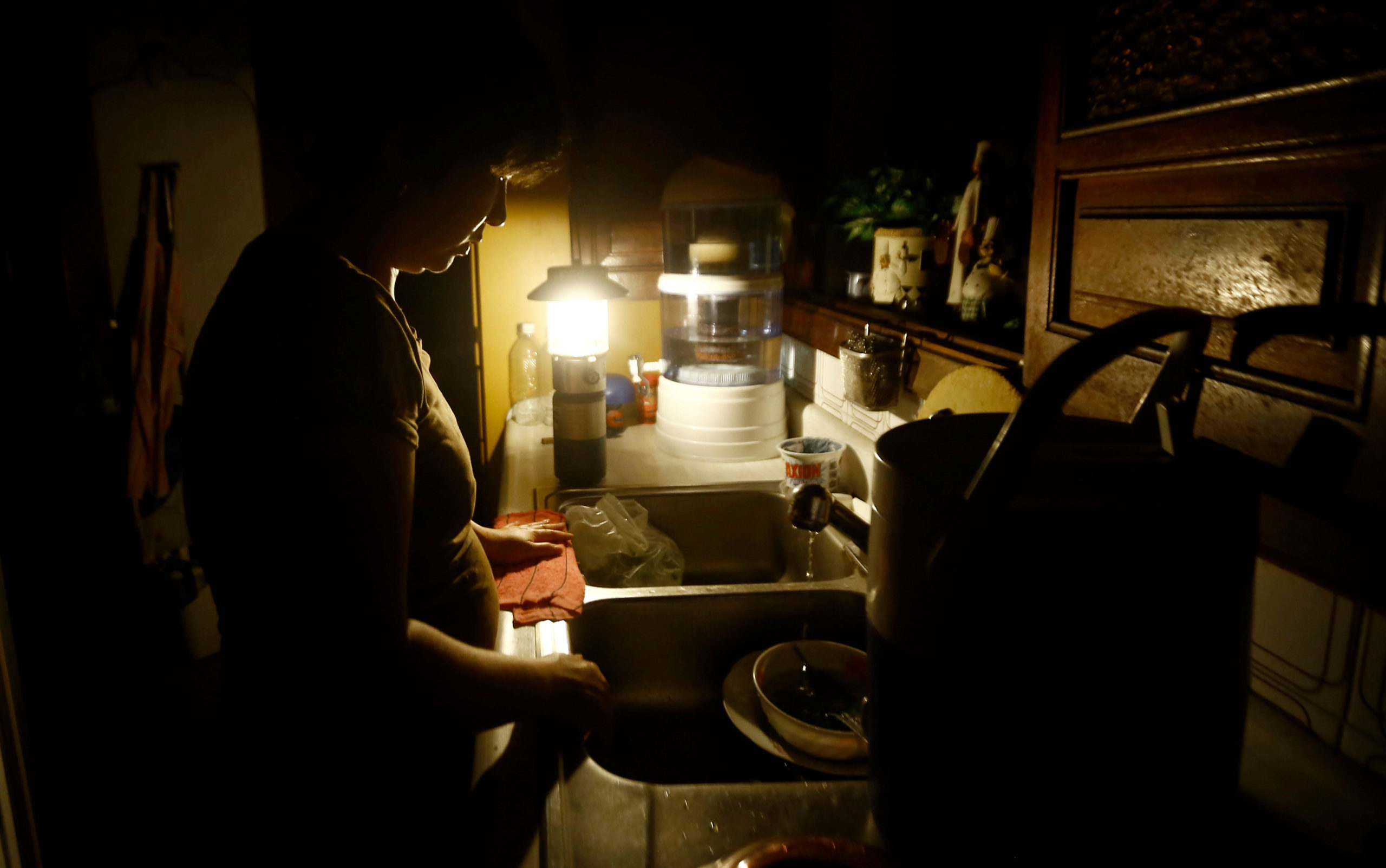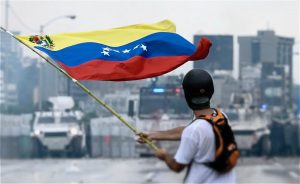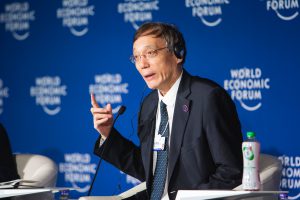Pieces of electrical cables rest on the floor next to a 20-year-old car in a home in Palo Negro, in Venezuela’s northern state of Aragua, where blackouts are frequent. Every night, when the electricity fails, 52-year-old bricklayer and baker Alberto Jaramillo connects his car battery to an incandescent light bulb. They now eat in the courtyard, braving the mosquitoes. His mechanical skills keep Jaramillo, his wife and daughter from dining in the dark.
“When the power goes out I can at least continue working on construction during the day, but in the bakery we stand idly by if oil for the power plant runs out. That’s a loss for the owner and for me, we’re forced to work on-and-off,” he says.
Each power cut can last from 15 minutes to several hours. It is important to save candles. The Jaramillo family scans the horizon to try to predict outages. They see if lampposts on the nearby road are on, or if the blackout is also affecting nearby communities or the neighbouring Libertador military airbase. This helps them calculate when service might resume.
72hrs
the length of the blackout parts of Venezuela suffered in March 2019
Venezuelans’ resourcefulness in dealing with intermittent outages since the 72-hour blackout that hit in March 2019 extends from such essentials as lighting to entertainment. Journalist Karina Peraza, 43, has kept board games for her children and organises bingo games for elderly people in Barquisimeto, capital of the north-western state of Lara. Wealthier families have bought emergency power plants, which are sold in many stores and through social networks with prices ranging from US$200 to $500.
The situation is worse in Zulia, the state that borders northern Colombia. It is the hottest part of the country, has abundant sunlight and the largest oilfields. Power cuts are much more frequent. Sometimes, there are only four hours of electricity per day. Some communities go weeks without power.
A significant portion of the US$5.7 billion China pledged to invest in Venezuela in 2014 should have strengthened the country’s electricity system. Although several hydropower and thermoelectric projects were agreed, five years on few Venezuelans are seeing the benefits.
Some 60% of Venezuela’s parishes, where 18 million people live, are subject to power rationing that can last from 3 hours to 10 days. Dozens of health and educational centres close for between three and seven days a month due to the lack of electricity, according to news site Prodavinci.
The report also reveals that rationing is uneven. The states with the largest indigenous populations, as well as the state capitals of Caracas and Vargas, are outside the programmed cuts. Since the onset of the electricity crisis in 2009, the government has prioritised the Venezuelan capital. When service suspension schedules are published, Caracas is always excluded.

An October 2019 survey by pollster Consultores21 revealed that, nationwide, 90% of Venezuelans suffer from power cuts.
Yet the capital has enjoyed fewer privileges since the March 2019 blackout, although they are still sufficient to attract internal migration, mainly from Zulia. The very frequent power failures that have delayed or paralysed the Caracas Metro on an almost weekly basis, have resulted in scores of anguished passengers walking home through underground tunnels.
Venezuela: shortages and blackouts
According to Nicolás Maduro’s government, there shouldn’t be any power problems. Citing figures from the Ministry of Electric Power, the Second National Communication on Climate Change says that by the end of 2014, Venezuela had an installed generation capacity of 30,467MW, of which 14,879MW was hydraulic, 15,477MW thermal and 50MW wind generated. Some 3,388 solar energy systems, eight insulated thermal and six hydroelectric microplants account for a further 60MW.
Yet the lack of official information makes it impossible to know how well the system really functions. The climate communication, which was presented to the UN and criticised by environmentalists for its political and imprecise content, also erroneously claims that the Tocoma hydroelectric plant is functioning. The March blackout proved that no systems are isolated or independent of the 10MW Guri hydroelectric plant. Not even wind farms or solar plants.
84%
of Venezuela's CO2 emissions come from the energy sector
In Venezuela, 84% of the 243,380 gigatonnes of CO2 equivalent emitted annually comes from the energy sector, of which 61% comes from burning fossil fuels. Increases in emissions since 1999 are attributed to population growth (despite the exodus of Venezuelans over the past couple of years), that of the vehicle fleet, and the economy. The Punta de Mata natural gas plant, the largest in the world, accounts for 39% of the energy sector’s emissions.
Amid the statistical darkness, since May 2016 it has not even been possible to determine the water level of the Guri dam. At that time, the Ministry of Electric Power stopped publishing data and accused the media of using statistics to spread anxiety.
The last time the Ministry was accountable for its activities was 2015. In a report from that year, it admits that it did not spend the entire budget on any of the planned projects. Nor did it fully comply with the following aims: to “modernise transmission infrastructure”, which it listed as having progressed 0%; to “strengthen ministry personnel’s skills and technical capabilities” (55% progress); and to “strengthen the ministry’s computer infrastructure”, which progressed 40%.
Coal-fired generation also failed to advance. None of the proposed 4,300MW were installed, although half of the allocated money was spent. The official document acknowledges that the “improvements to transmission infrastructure” failed to progress at all. Not a dollar was spent.
Such weak progress could explain why the bad habit of not keeping accounts took over. The state of Zulia, home to several key projects, is perhaps one of the hardest hit. The Termozulia III thermoelectric plant, which should have been managed by the ministry, showed only 2.7% progress. Nor were works on the San Francisco-Maracaibo electrical substation, or an underwater cable in Lake Maracaibo to serve the capital and its 1.5 million inhabitants completed.
A similar situation occurred with distribution projects. Stalled projects include the Angostura transmission line, the expansion of the transmission and distribution network in the south-east of the country and a 400v transmission line between the cities of Buena Vista and El Venado, which had barely progressed by 4%.
Delays were not limited to 2015. The Tocoma hydroelectric plant, which began construction in 2002 just 100 kilometres downstream from Guri and was delivered in 2014 by Argentina’s IMPSA and corrupt Brazilian multinational Odebrecht, was expected to meet 70% of the country’s electricity demand. The gigantic project has a long history of inflated budgets, stoppages, labour conflicts and delays. Its cost surpassed US$9.3 billion. Today, there is only a cracked dam that never operated.
Lost Yuan
On 21 July 2014, Chinese President Xi Jinping arrived in Venezuela and pledged to invest US$5.7 billion. He signed agreements that included commitments to develop six strategic sectors, among them electricity generation and distribution, alternative energies, and freight carrying.
Of the total amount, US$4 billion would be administered via the so-called Chinese-Venezuelan Fund, without the details specified.
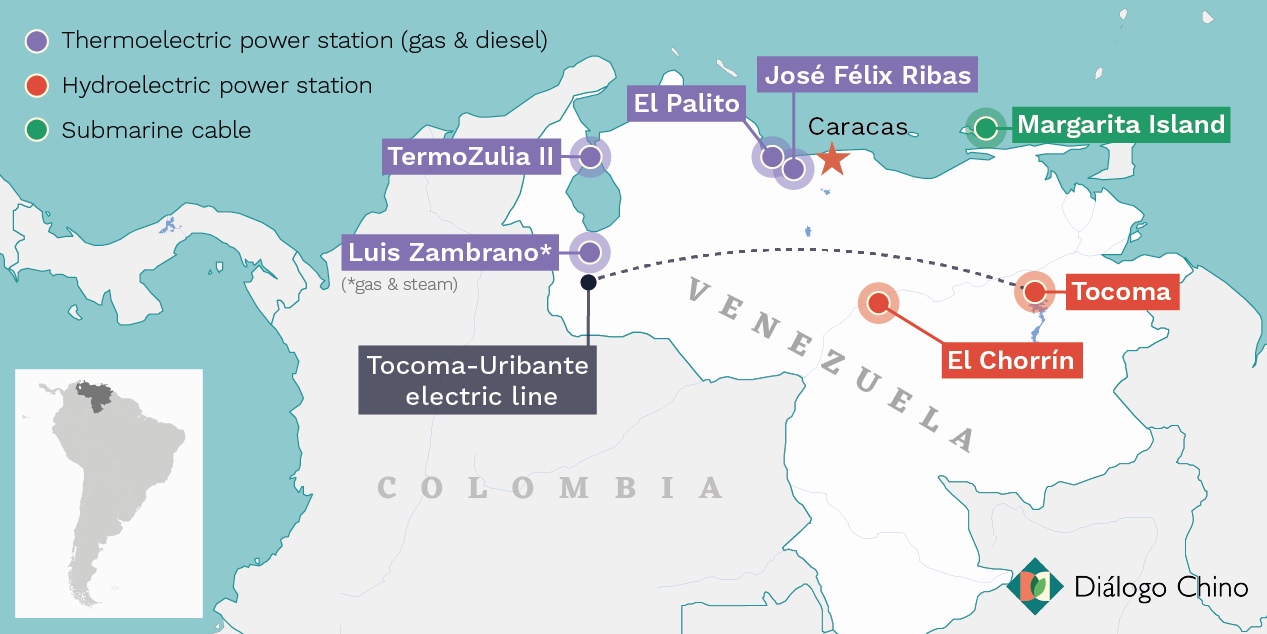
The Ministry of Energy’s 2015 report, which reveals the lack of progress in all of that year’s electricity projects, lists one Chinese investment.
Works associated with the 570MW Don Luis Zambrano thermoelectric plant in the state of Mérida, one of those most affected by frequent power outages, barely progressed 12% that year. Beyond studies and inspections, only 600 metres of one transmission line and none of the planned substations were completed, according to the power ministry’s 2015 annual report.
The fact sheet indicates that the total amount of the project was modified to 9.1 billion bolívares (some US$827 million at the time) but only work amounting to nearly 2 billion ($182 million) had been carried out. Among the report’s recommendations were that advances and valuations “to accelerate the works” be paid.
This combined cycle plant, which initially received US$112 million from the Chinese Fund, was announced in mid-2012 as one of the “spearheads” of the China-Venezuela electricity agreement. It was proudly announced that the project employed 720 Chinese and Venezuelan workers. It boasted a new Chinese turbine and industrial crane for construction.
The first 200MW turbine was fired up at the Luis Zambrano plant’s inauguration on 10 May 2014. Yet it was not until January 2015 that the third 180MW turbine came into operation. Transmission works should have been completed by the middle of the following year.
This is what makes us sad. This country was so prosperous. And now we’re miserable
The National Assembly set up a special commission of legislators in 2016 to study the electricity crisis and concluded that US$26 billion had been embezzled. After this, all private contractors working on energy projects since 2000 were summoned. On 4 May 2016, Julio Peng Wei attended on behalf of contractor China CAMC Engineering to explain the changes in the budget for the Luis Zambrano plant.
In the national assembly’s final report of January 2017, the commission revealed that the total cost of the project was US$1 billion. It cited the inclusion of a 56kv transmission line, the use of more advanced technologies and the increase in the cost of procurement and construction works at the mountainous construction site as the reasons for the larger budget.
Peng Wei also admitted that the thermoelectric plant has no gas inlet, even though this was included in the original design. Instead, it used diesel instead, which requires more frequent maintenance. The commission found a 60% surcharge on the work, equivalent to US$317 million.
State-owned Corpoelec also found irregularities and in 2017 disqualified CAMC from contracting with the Venezuelan government, pointing out that it had presented false documentation for the bidding process for an expanded electricity transmission and distribution project at Los Valles del Tuy, in the capital state of Miranda.
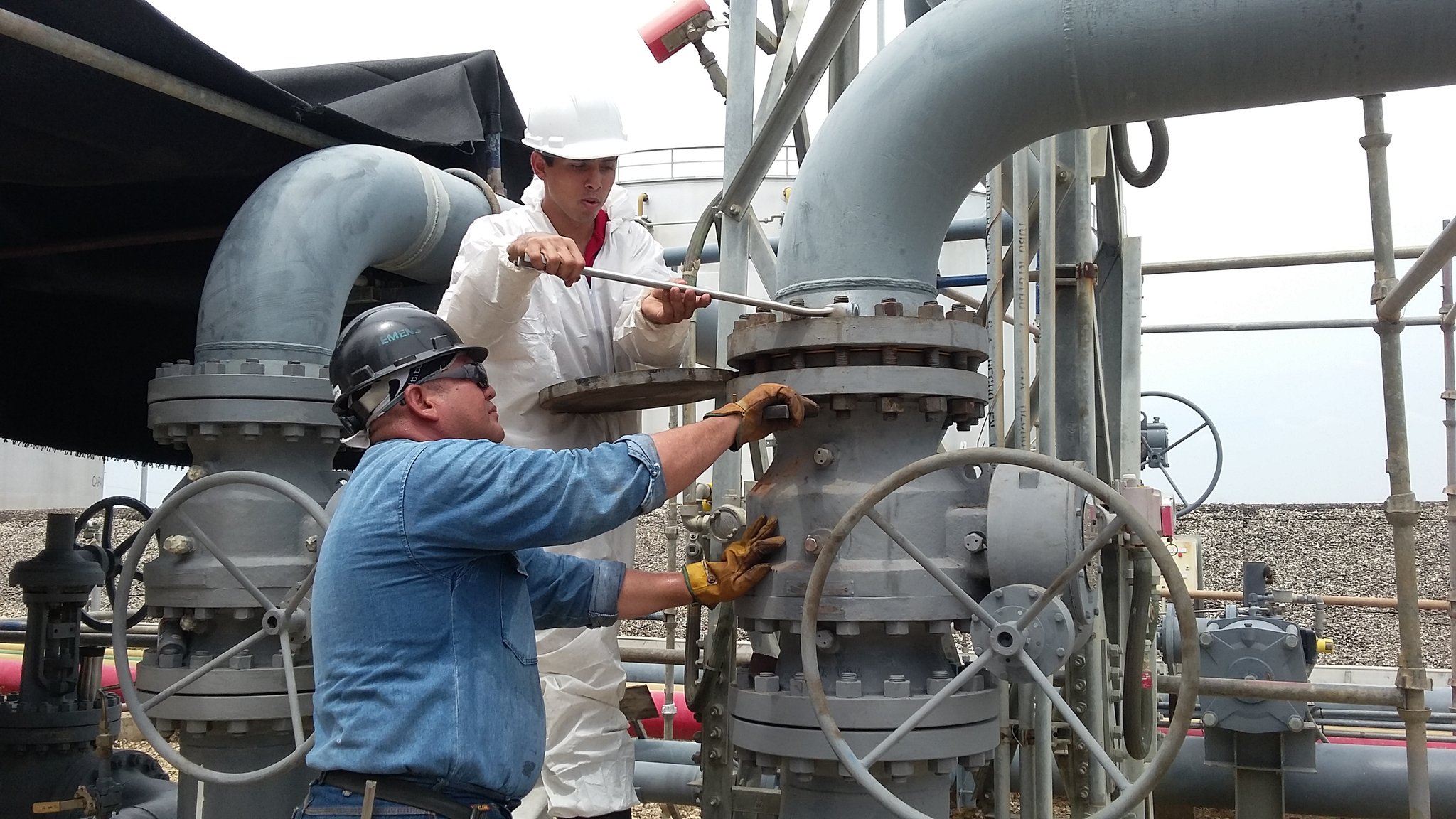
Investigative journalism website Armando.info also revealed an abundance of CAMC Engineering contracts since 2003, which the Chinese company won despite repeated technical failures and having only 20 employees at its small office in Caracas. CAMC were awarded US$3 billion in contracts for electrical, agricultural and industrial projects and even featured on a list of companies permitted to assess the size of natural resource deposits, despite having no expertise in the sector.
Strange darkness
A fire paralysed turbines one and three of the Luis Zambrano thermoelectric plant in early 2018.
A statement given in August 2019 by the government’s Freddy Bernal fanned the flames of confusion over official figures. The plant would be “strengthened” to 200 megawatts, less than the amount originally installed, according to the “political protector of the state of Táchira”, a parallel position created by Maduro to counter the opposition’s elected governor of Táchira.
In the two projects entrusted to Sinohydro, one of China’s largest state-owned companies, overcharging of more than US$900 million was detected.
Another investigative report, this time by Reuters, revealed the progress of a lawsuit in Andorra against more than 20 people of different nationalities. The case included a dozen Venezuelans who were accused of taking million-dollar bribes from Sinohydro and CAMC Engineering to obtain lucrative public contracts such as the TermoCarabobo thermoelectric plant (also known as El Palito) and the expansion of the La Cabrera substation, both located in the central region of Venezuela.
Bribes were paid to Diego Salazar Carreño, a cousin of Rafael Ramírez, the former oil minister and former president of state-owned oil company PDVSA.
Salazar, who went from being a humble salsa singer and insurance salesman to a magnate, thanks to contracts to insure and re-insure PDVSA, is locked up in the cells of Maduro’s Bolivarian National Intelligence Service (SEBIN) and has been waiting for trial since 2017. The ex-director of the police force Manuel Christopher Figuera, who is now in exile, says Salazar has been left in judicial limbo because of inconsistencies in the accusations.
A similarly obscure case is that of the Planta Centro thermoelectric plant, located in the central state of Carabobo, once the industrial engine of the country. The facility, the largest of its kind in the country with 2,000 MW installed, was operating at just 27% of its capacity by 2016, according to the report of the Joint Commission of the National Assembly, despite successive announcements about its rehabilitation, improvement and expansion.
One of these announcements was the signing of a contract in 2013 to add a sixth 600MW turbine, which was again presented as fruit of the China-Venezuela alliance. Thirty workers travelled to China to be trained to operate it.
It took six years for work to be completed in what should have taken four. Again, it was financed by the Chinese Fund. But this time it was the China Machinery Engineering Corporation (CMEC), which opted not to appear before the opposition-led parliament. The Joint Commission found a 125% overcharge, a total of US$1.4 billion dollars.
Despite the flows of finance, Planta Centro is out of operation. In October 2019, the new electricity minister, Freddy Brito, inspected the facility with a view to reactivating it. Its operation, or that of the two works built by Sinohydro, should have helped avoid the blackout in March in the states of Carabobo and Aragua, that became symbolic of Venezuela’s decline.
“This is what makes us sad. This country was so prosperous. And now we’re miserable,” says baker and bricklayer Jaramillo. “We’ve never lived through this before, not even in the worst of times. I would like to give more to my family.”
